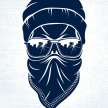Artificial intelligence used to create new style of painting
Artificial intelligence (AI)

I. Introduction
Artificial intelligence (AI) is a rapidly developing field that has the ability to change the way we live, work, and create. It involves the use of computer systems to mimic human intelligence, such as the ability to learn, reason, and make decisions. AI systems can be trained using large amounts of data and can be used to perform tasks that would otherwise be too complex or time-consuming for humans.
In recent years, there has been a growing interest in using AI to create new forms of art. From music and literature to photography and painting, AI is being used to generate new works that are both creative and unique. The use of AI in the field of art has the potential to open up new possibilities and to push the boundaries of what is possible.
II. The process of creating a new style of painting using AI
Creating a new style of painting using AI involves several steps. The first step is to train an AI model on a dataset of existing artwork. This can include a wide variety of paintings from different styles and periods, such as impressionism, cubism, or abstract expressionism. The AI model is trained to understand the patterns and features of these different styles, so that it can generate its own paintings that are similar in style.
Once the AI model is trained, it can be used to generate new paintings. This is done by feeding the model with random input data and allowing it to generate a new painting based on what it has learned. The resulting paintings will be similar in style to the artwork used to train the model, but will be unique and original.
The final step is to fine-tune the generated paintings to create a unique style. This can involve adjusting the color, composition, and brushstrokes of the paintings, as well as making other minor changes. By fine-tuning the generated paintings, the artist can create a new style of painting that is distinct from the styles used to train the AI model.
III. Advantages of using AI to create a new style of painting
There are several advantages to using AI to create a new style of painting. One of the main advantages is speed and efficiency. The process of generating new paintings using an AI model is much faster than traditional methods, as the model can generate hundreds or thousands of paintings in a fraction of the time it would take a human artist.
Another advantage is the ability to generate a large number of unique paintings. Since the AI model is trained on a wide variety of artwork, it has the potential to generate a wide range of different styles and forms of paintings. This can make it possible to create new styles of painting that would be difficult or impossible for humans to replicate.
Additionally, using AI can also enable the creation of new styles of painting which would be difficult for humans to replicate. The AI model can combine different styles and elements in unique ways, resulting in new forms of art that are not possible by human imagination alone.
IV. Challenges and limitations
Creating a new style of painting using AI poses several challenges and limitations. One of the main challenges is the difficulty in creating a model that can generate high-quality artwork. This requires a significant amount of data and computational resources, as well as the expertise to properly train and fine-tune the model. The process of training the AI model on existing artwork and fine-tuning the generated paintings to create a unique style is not easy and require a lot of technical skills.
Another limitation is the lack of human creativity and emotion in the final paintings. The AI model can only generate paintings based on what it has been trained to understand, and it is not capable of true creativity or originality. The paintings generated by AI models may lack the depth and meaning that is present in traditional works of art, as they are not based on the artist's personal experiences, emotions or perspectives.
Potential ethical concerns over the use of AI in the art world is another limitation. Some argue that the use of AI in art undermines the value and uniqueness of human-made art, and that AI-generated art is not truly "original" since it is based on pre-existing data. Additionally, the use of AI in art raises questions about authorship, ownership and the value of AI-generated art.
V. Conclusion
In conclusion, using AI to create a new style of painting has the potential to open up new possibilities and to push the boundaries of what is possible in the field of art. However, it also poses challenges and limitations such as difficulty in creating a model that can generate high-quality artwork, lack of human creativity and emotion in the final paintings, and potential ethical concerns over the use of AI in the art world. In the future, it is expected that with advancements in AI technology and the increasing understanding of how to use AI in the art world, more sophisticated AI models will be developed and more high-quality artwork will be generated. It will be interesting to see how the field of art will evolve with the integration of AI.
About the Creator
Yuvaraj Murugasan
"Discover thought-provoking content on our page. From latest news and mystery,crime,thiriller,death to cutting-edge technology, we offer something for everyone. Join us for a journey of learning and inspiration. Stay tuned!"






Comments
There are no comments for this story
Be the first to respond and start the conversation.